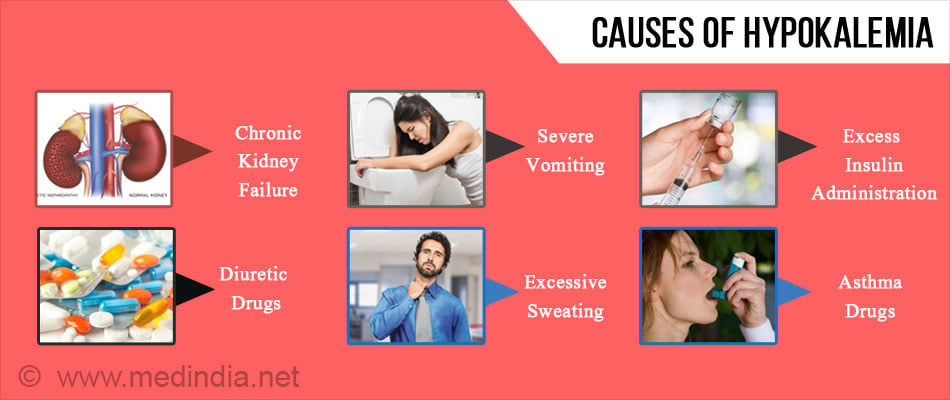why hypokalemia in dka Hypokalemia nursing school mnemonics potassium nurse rn low dummies pharmacology medical nclex insulin students notes hyperkalemia board mnemonic hyper vs
Today, I came across some interesting images that shed light on two important topics - hypokalemia and spinal surgery assessment. I must say, these images were quite enlightening and provided a lot of valuable information. So, without further ado, let’s dive into these topics!
Hypokalemia: The Low Potassium Condition
 Hypokalemia is a condition characterized by low levels of potassium in the blood. This can be caused by various factors such as certain medications, kidney problems, or excessive loss of potassium through vomiting or diarrhea. The image I found perfectly depicts the consequences of hypokalemia.
Hypokalemia is a condition characterized by low levels of potassium in the blood. This can be caused by various factors such as certain medications, kidney problems, or excessive loss of potassium through vomiting or diarrhea. The image I found perfectly depicts the consequences of hypokalemia.
The image shows a person experiencing muscle weakness, which is one of the common symptoms of hypokalemia. This condition can affect various muscles in the body, including those responsible for controlling movement and ensuring proper functioning of organs, such as the heart. Therefore, hypokalemia can lead to irregular heartbeats or even cardiac arrest.
Additionally, the image highlights another important symptom of hypokalemia - an irregular electrocardiogram (ECG) pattern. This pattern indicates abnormal heart activity and can be a cause for concern. It is crucial for healthcare professionals to identify these ECG changes and treat hypokalemia promptly to prevent any further complications.
Spinal Surgery Assessment
 Shifting our focus to a different topic, the image I discovered provides insight into spinal surgery assessment. It showcases the importance of evaluating the spine before and after surgery to ensure optimal outcomes for the patient.
Shifting our focus to a different topic, the image I discovered provides insight into spinal surgery assessment. It showcases the importance of evaluating the spine before and after surgery to ensure optimal outcomes for the patient.
The image highlights the importance of proper alignment of the spine, as well as the identification of any abnormalities or damage that may require surgical intervention. Assessment plays a crucial role in determining the best surgical approach and techniques to be used during the procedure.
Furthermore, the image emphasizes the use of imaging techniques like X-rays and MRI scans in spinal surgery assessment. These imaging modalities enable healthcare professionals to visualize the spine in detail, helping them make accurate diagnoses and develop effective treatment plans.
In conclusion, these two images provided valuable insights into hypokalemia and spinal surgery assessment. While hypokalemia can have severe consequences on muscle function and heart health, proper assessment of the spine is crucial in determining the best course of action for surgical interventions. It is remarkable how images can convey so much information in just a single snapshot!
If you are searching about Pathophysiology Of Hypokalemia In Dka | DiabetesTalk.Net you’ve came to the right web. We have 5 Pictures about Pathophysiology Of Hypokalemia In Dka | DiabetesTalk.Net like Diabetic ketoacidosis in children, Chapter 42 Fundamental | StudyHippo.com and also Diabetic ketoacidosis in children. Here it is:
Pathophysiology Of Hypokalemia In Dka | DiabetesTalk.Net
 diabetestalk.nethypokalemia dka pathophysiology diabetestalk ketoacidosis diabetic
diabetestalk.nethypokalemia dka pathophysiology diabetestalk ketoacidosis diabetic
Hypokalemia - Causes, Symptoms, Diagnosis, Treatment & Prevention
 www.medindia.nethypokalemia symptoms potassium insulin diabetestalk
www.medindia.nethypokalemia symptoms potassium insulin diabetestalk
1000+ Images About Assessment-Nursing On Pinterest | Spine Surgery
 www.pinterest.comhypokalemia nursing school mnemonics potassium nurse rn low dummies pharmacology medical nclex insulin students notes hyperkalemia board mnemonic hyper vs
www.pinterest.comhypokalemia nursing school mnemonics potassium nurse rn low dummies pharmacology medical nclex insulin students notes hyperkalemia board mnemonic hyper vs
Diabetic Ketoacidosis In Children
 www.slideshare.netdka ketoacidosis diabetic hypokalemia
www.slideshare.netdka ketoacidosis diabetic hypokalemia
Chapter 42 Fundamental | StudyHippo.com
 studyhippo.comhypokalemia studyhippo
studyhippo.comhypokalemia studyhippo
Hypokalemia symptoms potassium insulin diabetestalk. Hypokalemia nursing school mnemonics potassium nurse rn low dummies pharmacology medical nclex insulin students notes hyperkalemia board mnemonic hyper vs. 1000+ images about assessment-nursing on pinterest